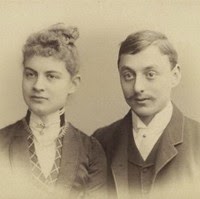Kroller-Muller Museum
History, Permanent Art Collection Highlights.
![]()
|
Kroller-Muller Museum |
 Helene Kroller-Muller, founder of the Kroller-Muller Museum Otterlo, and her husband Anton Kroller. |
Kroller-Muller Museum & Sculpture GardenContents • Summary |
|
|
Lesser known but still one of the best art museums in Europe, the Dutch Kroller-Muller Museum is noted for its collection of modern art from the late 19th-century and early 20th-century, and its extensive sculpture garden. Set in the Hoge Veluwe National Park in Otterlo, the museum - which opened in 1938 - is named after shipping heiress Helene Kroller-Muller (1869–1939) and currently has 330,000 visitors per year. It is the sixth most popular art gallery in the Netherlands. Its permanent collection, of about 11,500 items, is famous for having the second-largest holding of works by Van Gogh (1853-1890). This is because Kroller-Muller was one of the first art collectors to recognize the genius of the artist, and her personal collection made up the bulk of the museum's inaugural collection. Other museums of fine art in the Netherlands include: the Rijksmuseum, the Stedelijk and the Van Gogh Museum (all in Amsterdam), the Museum Boijmans Van Beuningen (Rotterdam), and the Mauritshuis (The Hague). |
|
APPRECIATING PAINTING |
|
|
The museum was the brainchild of collector Helene Kroller-Muller (nee Muller), who with the help of advisor HP Bremmer, built up a sizeable art collection with money accumulated by her husband Anton Kroller. Indeed, within a few years she possessed the world's largest private holding of paintings by Van Gogh (except that of the Van Gogh family itself). In 1935 the estate and art collection were acquired by the State. Three years later the museum opened to the public in a building designed by Belgian architect Henry van de Velde. Helene Kroller-Muller was its first director until her death in 1939. (For more about Helene Kroller-Muller, see Post-Impressionism in Holland: 1880-1920.) After the war the museum underwent several improvements and extensions: the sculpture garden was added in 1961 and an entire new exhibition wing, designed by Wim Quist, was added in the 1970s. Further improvements were made in 2005. Meantime, the sculpture garden has increased in size several times over the years and is now one of the largest in Europe. The core of the Kroller-Muller permanent collection is the series of paintings by Vincent van Gogh, including the magnificent "Cafe Terrace at Night" and a version of "The Potato Eaters". It is in fact the second-largest holding of Van Gogh works in the world (after the Van Gogh Museum in Amsterdam). In 2012, experts using macro scanning X-ray fluorescence spectrometry (MA-XRF) techniques confirmed that a painting (Still Life with Meadow Flowers and Roses, 1886) acquired by the museum in 1974, was in fact painted by Van Gogh. Other highlights include paintings by Piet Mondrian (the founder of Neo-Plasticism), Georges Seurat (founder of Pointillism), Odilon Redon (France's influential exponent of Symbolism), plus Georges Braque and Pablo Picasso (co-inventors of Cubism), Paul Gauguin (founder of Synthetism and Cloisonnism), and Lucas Cranach (a leading figure in the 16th-century Danube School). The collection also features Dutch, Italian, and German paintings from the 16th- 17th- and 18th centuries, as well as a quantity of drawing and other works on paper. In addition, it has numerous items of Chinese art - including Chinese porcelain - and a collection of Greek pottery as well as additional ceramic art from Egypt and France. Painting highlights by modern artists at the Kroller-Muller Art Museum include: - Woman Baking Bread (1854) by Jean-Francois
Millet. Designed by Professor J.T.P. Bijhouwer in line with Helene Kroller-Muller's vision of a symbiosis between art, architecture and nature, the museum's sculpture garden first opened in 1961. It is located within the forest park which extends for more than 75 acres. In the early 1970s and during the 1990s it underwent a number of extensions and improvements. In addition to works by 19th-century sculptors like Auguste Rodin (1840-1917), the garden is home to works by several of the greatest 20th-century sculptors, including Henry Moore (1898-1986), Alberto Giacometti (1901-1966), Jean Dubuffet (1901-1985) - see, for example, his Jardin d' email - Barbara Hepworth (1903-1975), Mark Di Suvero (b.1933), Claes Oldenburg (b.1929) - see, for instance, his gigantic Pop art sculpture entitled Trowel (1971) - Richard Serra (b.1939), Christo & Jeanne-Claude, and many more. The Kroller-Muller Museum is open to the public from Tuesday to Sunday (and public holidays) from 10.00 to 17.00 hours. The sculpture garden closes 30 minutes earlier at 16.30. Kroller-Muller Museum P.O. Box 1 |
|
|
|
• For details of more galleries in
the Netherlands, see: Best Art Museums. ENCYCLOPEDIA OF ART |